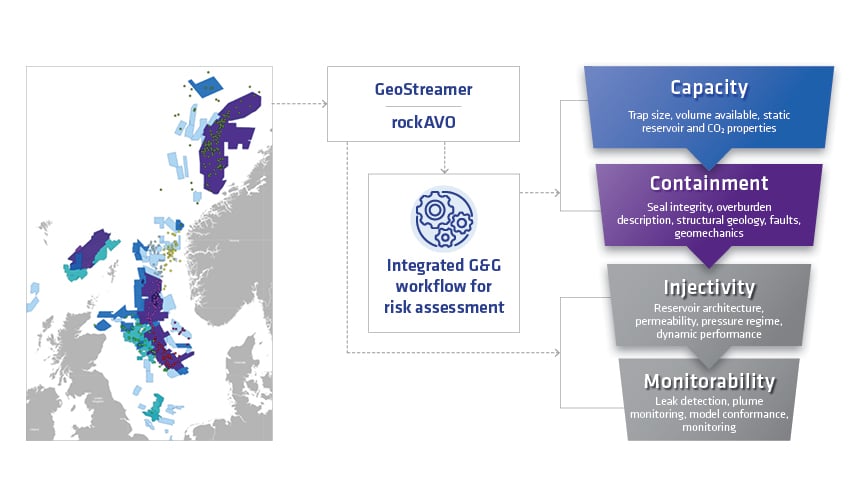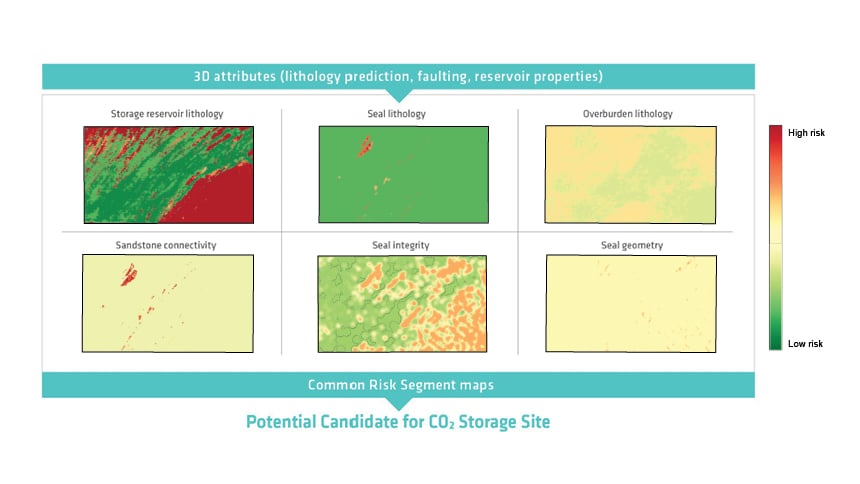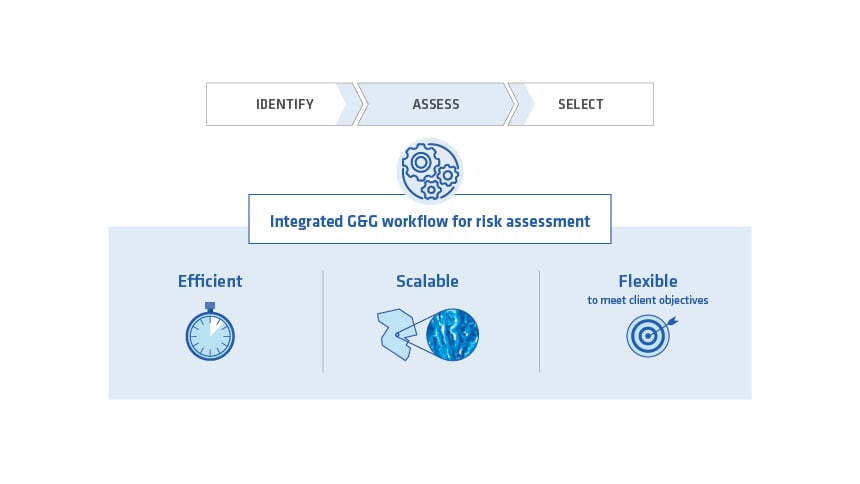The world must both reduce its CO2-generating activities and permanently store more of it. At present, there are less than 30 sites worldwide with a combined storing capacity of around 40 Mt of CO2 /year (GCCSI, 2020; Ringrose and Meckel, 2019), and the expectation is to have close to 300 Mt storage capacity per year by 2050 (European Commission, 2018). There is an immediate need to identify viable and sufficiently largescale CCS storage sites fast.
Define and Appraise CO2 Sites with GeoStreamer and rockAVO

PGS’ global MultiClient library (one of the largest seismic data libraries in the world) is the foundation for the development and implementation of an integrated geological and geophysical (G&G) workflow for risk assessment of carbon storage site capacity and containment. A Proof-of-Concept (PoC) area has been chosen in the North Sea within an extensive cross-border (UK and Norway) regional GeoStreamer dataset. The broadband seismic data allows significant and efficient site assessment by providing accurate and detailed descriptions and understanding of the subsurface, with more reliable attributes for key storage capacity parameters such as net-to-gross, porosity and thickness.
These parameters are firstly derived from well measurements through petrophysical and rock physics evaluation. Rock physics understanding is accessed through the PGS interactive rock physics product, rockAVO. This regional product offers a consistent, homogenous processed well-log database.
Understanding the Subsurface for Capacity and Containment Characterization
The workflow to assess capacity and containment includes a complete G&G study comprising seismic data conditioning, seismic interpretation, depth calibration, well-to-seismic ties, seismic inversion as well as rock physics and reservoir properties estimation.
This workflow is a data-driven approach that, from 3D analysis, estimates the risk and uncertainties of key features relevant to CCS, including lithology, integrity, size, geometry, and sand connectivity. This is crucial for the C02 containment assessment and storage capacity calculations.
Revealing Storage Site Potential Efficiently with (semi) Automatic Tools
The storage site assessment integrates the outcomes of the capacity and containment analysis and the risk evaluation, and it has been designed to be automated. Having an automatic solution enables the deployment of the workflow over large areas, resulting in the efficient screening of different volumes, the comparison of various sites and more confident site selection.
Integrated and Flexible Workflow for Carbon Site Characterization

Characterizing the capacity and containment of a carbon storage site is only a part of a larger CCS value chain. It is therefore important to place this workflow into a recognizable front-end project context: Identify, Assess and Select. Throughout these stages, the objective will be to identify and screen many potential sites and through technical analysis to define the most suitable to meet the CO2 storage needs of the project. The ultimate objective of the “assess” and “select” processes, is to reduce the risks associated with site characterization and achieve sufficient confidence that the project can move into the detailed engineering and design phase. The integrated G&G workflow provides numerous benefits
- Automatic processes for time-efficiency delivery
- Integrated G&G technology and expertise
- Scalable workflow (regional to local evaluation)
- Possibility to tailor to project objectives
Contact a PGS expert
If you have questions related to our New Energy business please send us an email.